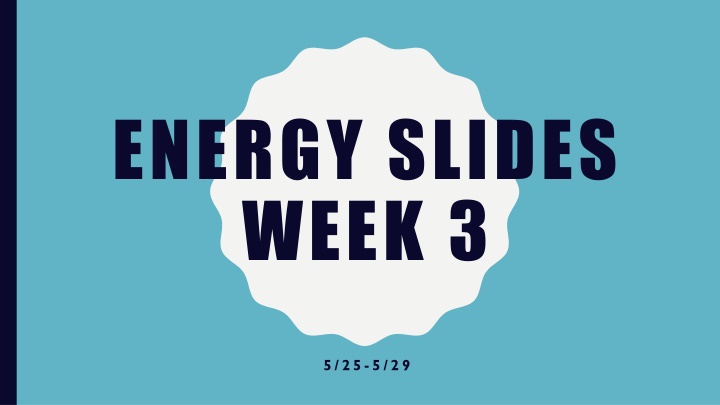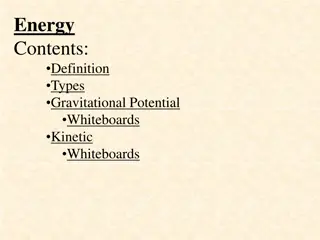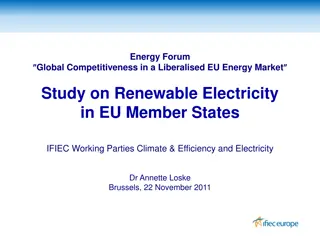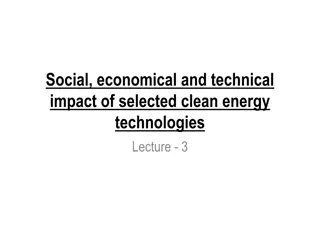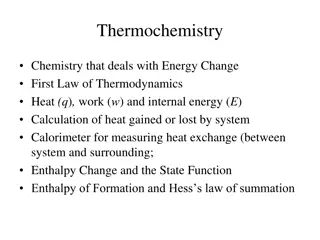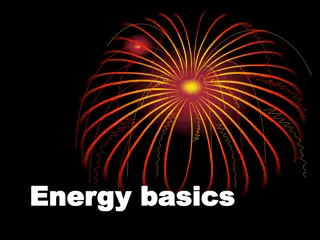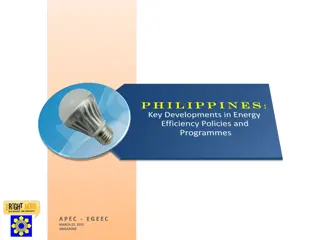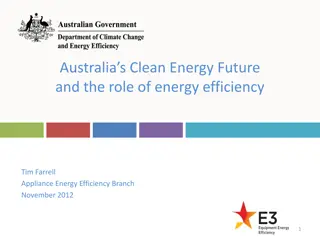ENERGY SLIDES WEEK 3
Discover the world of energy sources, including renewable and nonrenewable options, and learn why conservation is crucial. Dive into the differences between energy efficiency and energy conservation while exploring the advantages and disadvantages of nonrenewable sources. Engage with interactive activities and quizzes to enhance your knowledge and understanding of the vital role of energy in our daily lives.
Download Presentation

Please find below an Image/Link to download the presentation.
The content on the website is provided AS IS for your information and personal use only. It may not be sold, licensed, or shared on other websites without obtaining consent from the author.If you encounter any issues during the download, it is possible that the publisher has removed the file from their server.
You are allowed to download the files provided on this website for personal or commercial use, subject to the condition that they are used lawfully. All files are the property of their respective owners.
The content on the website is provided AS IS for your information and personal use only. It may not be sold, licensed, or shared on other websites without obtaining consent from the author.
E N D
Presentation Transcript
ENERGY SLIDES WEEK 3 5/25-5/29
GOALS Understand how humans use energy Differentiate between renewable and nonrenewable sources Understand why we should conserve energy Explain the difference between energy efficiency and energy conservation. Describe nonrenewable energy sources and the advantages and disadvantages of each.
WATCH https://www.youtube.com/watch?v=PLBK1ux5b7U https://www.youtube.com/watch?v=KdR_6Taga5A https://www.brainpop.com/science/energy/conservingenergy/
5/26 Use smart art to fill in 5-8 big ideas presented in the videos
Follow this site: http://www.eia.gov/kids/energy.cfm?page=2 Read about Energy Sources Answer the following questions 1. Energy sources can be classified as ______________________ or able to be reused or __________________ not able to be used again. 2. What percent of U.S. energy comes from nonrenewable energy sources? 3. List the four categories of nonrenewable energy sources. 4. Click on the major heading Renewable 1. The five renewable sources used most often are: 2. Why don t we use more renewable energy sources? ENERGY WEBQUEST
Go to this page: http://www.eia.gov/kids/energy.cfm?page=electricity_home-basics 1. What does it mean to say that electricity is a secondary energy source? Go to this page: http://www.eia.gov/kids/energy.cfm?page=electricity_science-basics 1. Complete this quote: By using moving ________________ and _________________ wire together, electric ___________________ create electricity. Electric generators essentially convert _____________________energy (the energy of motion) into _____________ energy. 2. How does a battery produce electricity? 3. Explain how we can produce electricity by turning a turbine. 4. What is the main way that we turn turbines in the U.S.?
GOALS Understand how humans use energy Differentiate between renewable and nonrenewable sources Understand why we should conserve energy Explain the difference between energy efficiency and energy conservation. Describe nonrenewable energy sources and the advantages and disadvantages of each.
Go to this page: http://www.eia.gov/kids/energy.cfm?page=nonrenewable_home-basics 1. Explain how oil is formed. 2. List the five states that produce the most oil in the U.S. 3. Complete the following chart for the top 5 oil-producing countries in the world: Country % of oil produced
3. What is an oil refinery? Go to this page: Natural Gas http://www.eia.gov/kids/energy.cfm?page=natural_gas_home- basics 1. Where is most of the natural gas used in the U.S. produced? 2. How is natural gas moved from the producing fields to the consumer?
4. What are the top 5 natural gas producing states/regions in the U.S.? 5. Natural gas is a relatively clean burning fuel, meaning it produces less _________ than oil or coal. Go to this page: http://www.eia.gov/kids/energy.cfm?page=coal_home-basics 1. List the four types of coal: 2. Describe surface mining. 3. Describe underground mining . 4. 93% of the coal used in the U.S. is used to produce __________________________. 5. What is mountaintop mining?
Go to this page: http://www.eia.gov/kids/energy.cfm?page=nuclear_home-basics 1. What is the difference between nuclear fission and nuclear fusion? 2. Which is used in nuclear power plants? 3. What is the most common fuel used in nuclear power plants? 4. What are the steps that produce electricity from this fuel?
